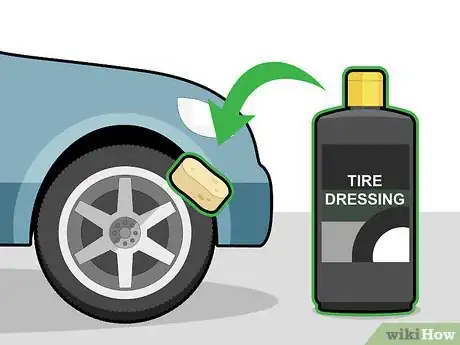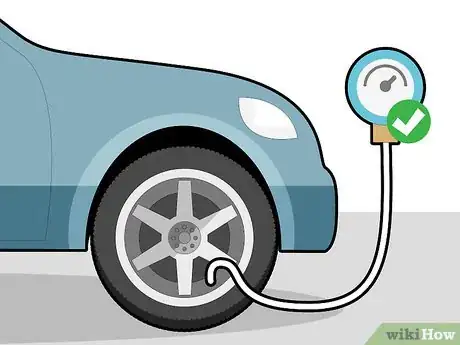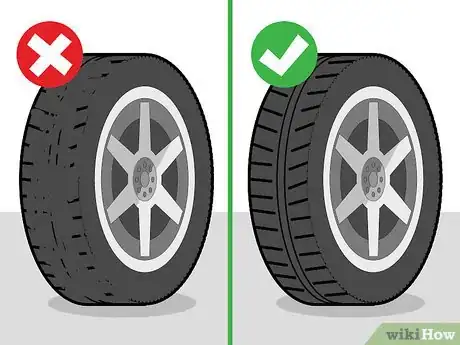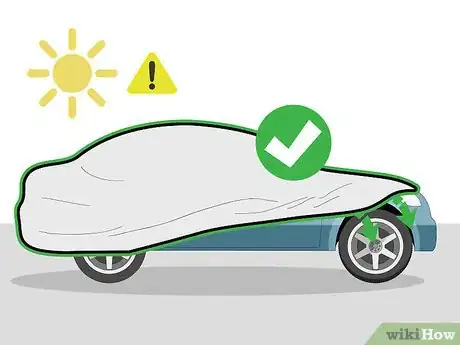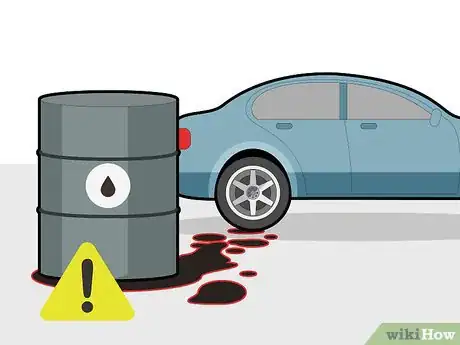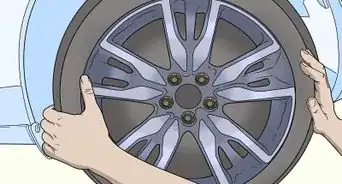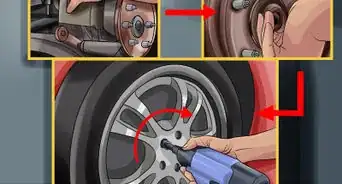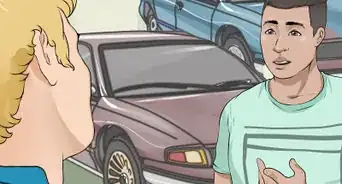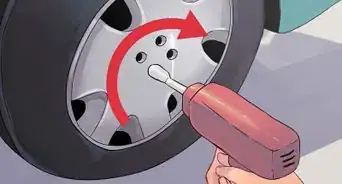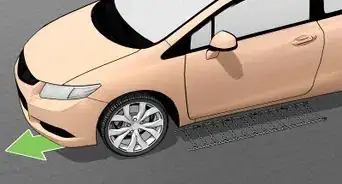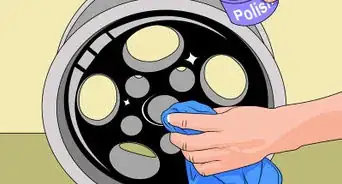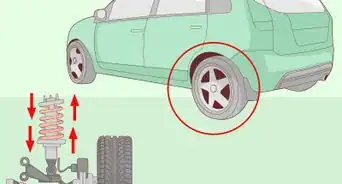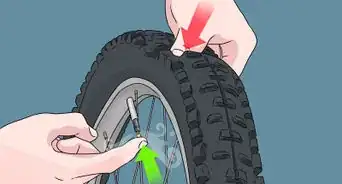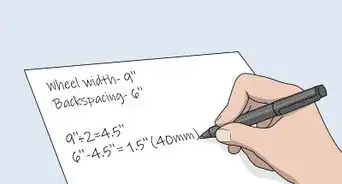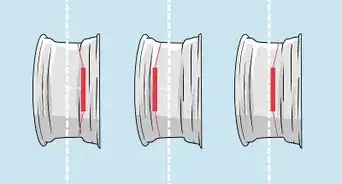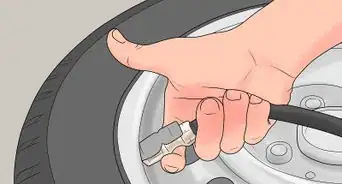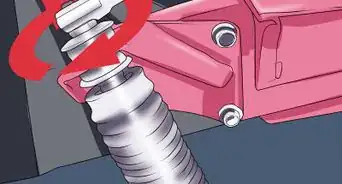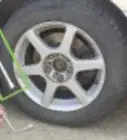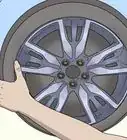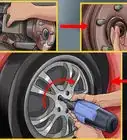This article was co-authored by Howard Fleischmann. Howard Fleischmann is an Automotive Tire and Repair Specialist and the CEO of Community Tire Pros & Auto Repair, with ten locations throughout Phoenix, Glendale, Yuma, and Casa Grande, Arizona. Howard specializes in full-service auto repair and tire replacement and care for domestic/imported vehicles and large trucks. Howard’s dedication to Community Tire Pros & Auto Repair has earned their team multiple awards and features including the 2021 Phoenix Magazine AZ State 48 “Best of the Best!”, the 2020 “Best of Phoenix” in Auto Repair, the 2013 Master SBD award, the 2013 National “Top Shop” award by Tire Review, the 2012 Diversity Champions Phx Business Journal, the 2009 BBB Ethics award, the 2008 Phx Chamber of Commerce Impact Award -” Small Business of the Year”, and the 2008 ASU Spirit of Enterprise award. Howard is often referred to as “The Car Guy” for local TV stations and is a regular on TV’s Channel 3 Sunday, Good Morning Arizona monthly.
wikiHow marks an article as reader-approved once it receives enough positive feedback. In this case, 83% of readers who voted found the article helpful, earning it our reader-approved status.
This article has been viewed 49,679 times.
Dry rot is a deterioration of the the rubber in a tire. Initially appearing as small cracks in the tire's treads or on the sidewalls, if left unchecked it will worsen until the tire begins to leak, or in some cases, blows out. A few of the main causes of dry rot are low tire pressure, not moving the vehicle enough, ozone, and high temperatures.[1] Whatever the cause may be, you can make sure dry rot doesn't happen to you by keeping your vehicle clean, moving it out of the sunlight, and changing your tires often.
Steps
Preventing Dry Rot with Maintenance
-
1If you clean your tires, do not use harsh chemicals. Use a washcloth with some mild soap (dish soap is fine) and wash the surface of the tire, then spray it off with a garden hose. Soap and water will clean your tires without stripping away valuable antioxidants that protect your tires.[2]
-
2Apply a tire dressing once a month. After cleaning your tires, apply a few drops of water-based tire dressing to a cloth or sponge, then cover the surface of the tires with the dressing. Wait 5-10 minutes before driving, since the dressing needs time to stick to your wheels.[3]
- You can get tire dressing for $5-25 (£3.57-17.86) from most auto stores. It's sometimes labeled as "tire shine" or "tire care."
- Tire dressing shields your tires from UV rays, one of the main causes of dry rot.
Advertisement -
3Make sure your tires are fully inflated. Check the air pressure in your tires every time you gas up. If your tires don’t have enough pressure, dry rot will be all the more dangerous, and could lead to a blowout.[4]
-
4Replace your tires when they're too bare to grip the road. Replace old tires when the tread is wearing thin. Not only are older tires dangerous (because their tread is bare), but they're also at a higher risk of dry rot.[5]
- If you drive a car, truck, or SUV, you can gauge this by sticking a quarter into one of the grooves of the tire. If the top of George Washington's head is flush with the top of the tire, it's time to start shopping for tires.[6]
- For a larger vehicle like a semi-truck, use a penny. If Abraham Lincoln's face is completely visible, it's time to replace your tires.[7]
- The casing on tires is usually only good for 5-6 years. Then, the tires need to be replaced.[8]
Caring for a Parked Car
-
1Move your vehicle at least once a month. Make sure that you’re not letting your vehicle sit for months at a time; keep your vehicle moving to decrease the risk of dry rot. Tires need to flex their rubber in order to let the protective antioxidants make their way to the surface of your tires.
- Even if you have a vintage car that you never drive, try to get it out of the garage and drive it for a few miles once a month. This will help the antioxidants work most effectively and keep your tires safe.
-
2Keep your car out of direct sunlight. Since UV rays are a main cause of dry rot, you can protect your vehicle by storing it in a garage or under a car port when you're not using it.
- If you don’t have a garage or car port, most automotive stores sell inexpensive tire covers, which protect your tires from UV rays.
- Also consider parking your vehicle inside a parking garage, instead of parking it on a curb. Not only will you keep your vehicle out of the sun, but you'll be doing your tires a favor by keeping them away from the curb.
- They also sell covers that you can cover up your tires with to protect them.[9]
-
3Avoid parking your vehicle near petroleum spills. Petrochemicals can dissolve the the antioxidants on your tires, putting you more at risk for dry rot.
- Make sure to store any extra tires indoors and out of the sun, as this will greatly prolong their lifespan. Don't store them in room where electric motors are run, though, as ozone produced by sparking brushes can also cause dry rot.
Community Q&A
-
QuestionCan tires dry rot from the inside out?
 Community AnswerInactivity, low tire pressure, and excessive heat are the primary culprits that cause automobile tire dry rot. If you notice little cracks running spider-like along the sidewalls of the tires and running all the way to the tread, you may be experiencing a common phenomenon that occurs in stagnant cars – tire dry rot.
Community AnswerInactivity, low tire pressure, and excessive heat are the primary culprits that cause automobile tire dry rot. If you notice little cracks running spider-like along the sidewalls of the tires and running all the way to the tread, you may be experiencing a common phenomenon that occurs in stagnant cars – tire dry rot.
References
- ↑ https://www.angieslist.com/articles/what-tire-dry-rot.htm
- ↑ https://wheelscene.com/prevent-dry-rot-tires/
- ↑ https://wheelscene.com/prevent-dry-rot-tires/
- ↑ https://one.nhtsa.gov/people/injury/pedbimot/motorcycle/psimotorcycle/pages/McycleTireSafTips.htm
- ↑ https://wheelscene.com/prevent-dry-rot-tires/
- ↑ https://www.consumerreports.org/tires/when-to-replace-your-tires/
- ↑ https://nearsay.com/c/193918/118068/truck-repairs-when-to-change-your-semi-trucks-tires
- ↑ Howard Fleischmann. Automotive Tire & Repair Specialist. Expert Interview. 4 June 2021.
- ↑ Howard Fleischmann. Automotive Tire & Repair Specialist. Expert Interview. 4 June 2021.
About This Article
Dry rot can ruin your tires in severe cases, but fortunately there are a few things you can do to prevent it. Clean your tires once a month with warm soapy water and a washcloth to get rid of any fungus that may be growing on them. After cleaning your tires, apply a few drops of tire dressing to protect them from ultraviolet rays, which are a common cause of dry rot. You should also make sure your tires are properly inflated, which will prevent them from blowing out if there is any dry rot on them. If your car is parked permanently, drive it once a month for at least a few miles to flex the rubber of the tires and activate the protective antioxidants. Keep the car under shelter or use tire covers to protect them from the sun. For more tips, including how to protect your tires when parking, read on!

